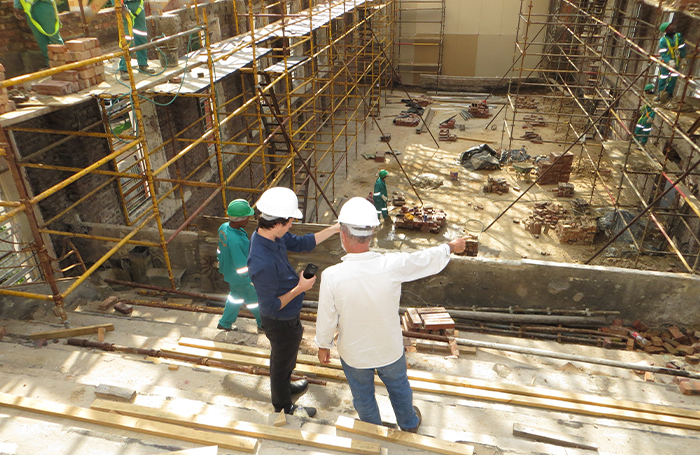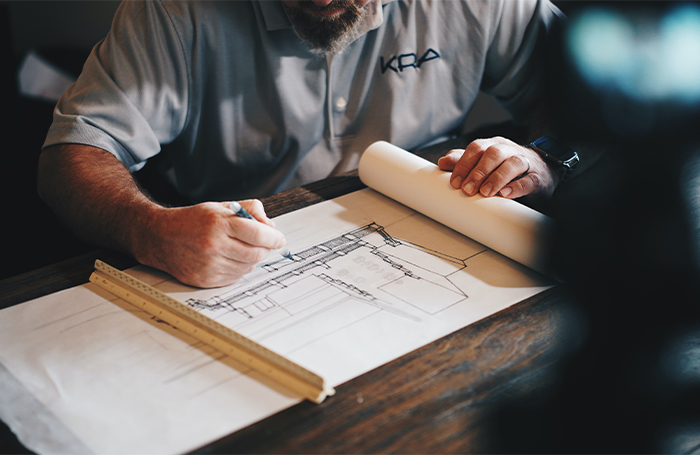Succession planning for your practice
There will come a time in your life as a business owner when you want to spend less time at work and more time doing something equally rewarding outside of the office. It may be that you want to retire completely, or that you just want to get that seemingly impossible to achieve 'work/life balance'. This is where succession planning within your business can help.
What is succession planning?
Succession planning can essentially be viewed as a way to structure the transition of ownership, management, and control of an architecture practice. This process is to ensure a smooth and effective transition when it comes time for leadership to step down and the next generation of leaders to emerge. While it can seem complex and time consuming, failure to effectively plan can be critical for the future success of a business.

Succession planning options
With exits, there are a series of options open to you and we will consider the most relevant ones below. We have excluded floating on the open market as this is considered to be highly unlikely as an option for the vast majority of architectural practices.
Employee-Owned Trusts (EOTs)
This is an increasingly attractive proposition for owners looking to sell their practices. In the last few years, we have seen many architectural practices sold using this option. An EOT is where the business buys itself out of future profits (similar to leveraged finance) but without requiring a bank loan and, more importantly, on behalf of all employees rather than a select few.
The advantages of this route are:
- individuals do not spend any money to fund the purchase
- all proceeds that the owner receives on the sale are tax free under current legislation
- the culture of the business remains the same
- owners selling the business have the flexibility to make their exit as quickly or as slowly as they like, enabling a smooth transition
- if employees receive future profit shares, the first £3,600 of this per annum is tax free. NI still applies
- owners of a business often feel that this route is a just reward for employees who have given long service to their practice
As with all the routes above, there are disadvantages to EOTs:
- the owner does not receive all their funds at once, but over a period of years
- the payments come out of profits that the firm is making and hence there is a risk that the payments will be delayed
- the owner could have taken these profits as dividends, so they are giving up this right. Dividends are highly taxed and the share purchase is not. This makes it less suitable for younger individuals looking to exit as they have more years of potential profit-taking that they are giving up
Employees are beneficiaries of the trust and do not own any shares which means that they do not control the business. The trust company owns the shares. Learn more about Employee-Owned Trusts in 10 reasons why your practice should consider an EOT.

External sale
When people imagine an exit from a business this is one of the options that most people are familiar with. This option is where an external individual or business makes an offer to buy the practice from you and then runs the business themselves.
There are many advantages to this option:
- you often receive most, if not all of your money up front
- any period that the new owners require you to remain with the business for handover is often minimal allowing a faster exit
- it provides a quick, clean transfer of ownership which means less confusion in the business
There are however, some disadvantages:
- there is less chance for you to make a phased handover or remain in some capacity with the business as the new owners will want to change the business to their way of operating
- there is often a quite drastic culture change in the business as the new owners impose their way of operating. This leads to unsettled staff and the potential exit of long serving, valued members of the business
- it can be more disruptive to your clients
- you have to pay Capital Gains Tax on the sale proceeds
Whilst the idea of an external sale may be attractive to you (partly due to the reasons set out above), it is highly unlikely you will be able to achieve an external sale. The reasons for this are:
- architectural practices are not attractive to an external investor as their workflow (and cash generation) is inconsistent, being project driven
- architectural practices are not necessarily very profitable and hence do not provide an attractive rate of return to a potential investor
- there is little history of architectural practices successfully buying other architectural practices which makes your competitors hesitant about buying another firm
Even if another architectural practice wishes to buy the firm, they will struggle to finance the purchase as banks will not readily lend the money required due to inconsistent cashflows. Also, most architectural practices do not make sufficient profits to finance the purchase themselves.
Management buy-out
Often, owners have tried unsuccessfully to sell their business externally and at this point, they start to discuss the idea of the next generation within the business buying it from them.
This option can be attractive for many reasons:
- the business culture often remains the same as the next generation continues to operate the business in a similar manner to previously
- it is easier to negotiate a phased handover of the business and for the previous owner to remain in the business for longer if they wish
- the handover usually is less disruptive to both clients and employees
This route has its disadvantages:
- you usually receive your money over a longer time period as the purchase of shares is often phased rather than all in one go
- you frequently receive less money this way (compared to an external sale), either due to management having access to fewer funds or the sale of minority shareholdings being discounted
- if you want a quick clean exit, this rarely fits the bill
Again, whilst this option seems to be attractive, we are not seeing many of these types of transactions happen in the industry. Amongst the reasons that these are not prevalent are:
- the next generation has often worked in firms all of their lives, are used to receiving a guaranteed salary, and are, therefore, often more risk averse
- the next generation may be in a stage of their life which makes it difficult to access the necessary funding. They may be fully mortgaged on their home, have children at school and so simply cannot afford to pay the price of the firm

Leveraged finance buy-out
We will discuss this briefly as we have not seen a single transaction of this type within the industry, nor would we necessarily expect to, but people do ask about it and so it is worth mentioning.
A leveraged finance buy-out is a banking term for the company borrowing money itself to fund the management buy-out. As previously stated, the next generation cannot afford to purchase the firm, nor can they borrow sufficient funds to complete the sale. One solution to this is for the business to borrow the funds itself and use these funds to purchase the shares on behalf of the managers. The company then pays back the loan out of future profits. Effectively the firm is purchasing itself on behalf of the new owners.
In principle, this seems like a good plan so why do we not see these in architectural practices?
For banks to lend they need security to lend against, and usually this is against the company’s balance sheet. Professional services firms, such as architects, have small balance sheets and hence the firms can never borrow enough to purchase the shares.
Banks also require significant contributions from the new owners at the same time as they lend the majority of funds to purchase the practice. This is known in the trade as 'hurt money' for obvious reasons. Again, the next generation often cannot afford it.
Often there is strong resistance to this route as it is the business that is paying for itself. This can lead to bad feelings in the business or externally.
Employee share schemes
Some firms attempt to use this option for the exit of the owner. Usually, a system is set up where some, or all, employees receive share options that they can purchase over time, eventually leading to the transfer of ownership to the employees.
This can be attractive for the following reasons:
- the share options can be made available to all staff, meaning that all staff can have a stake in the business. It is a very egalitarian route to exit and is seen as a way of rewarding staff who have helped build up the business
- there are often tax advantages, particularly for the employees, if certain rules are followed
The disadvantages of this route are:
- it takes a very long time to transfer ownership of the business. You will need to start this really early in your business's life
- the owner receives a lot less money than an external sale as all minority share purchases (which these are) are heavily discounted
- you need to have the business valued to set the price each time options are set up
- occasionally, no one clear owner emerges, as everyone owns equal amounts of the business. This can lead to a lack of clear decision-making and paralysis in the practice with everyone trying to have their say
Written by Michael Holmes, Associate Director at Whitemoor Davis
If you would like further details from our RIBA Business partner Whitemoor Davis on EOTs or would like to arrange a conversation, contact the RIBA Business team at business@riba.org or call +44 (0)20 7307 3737.






